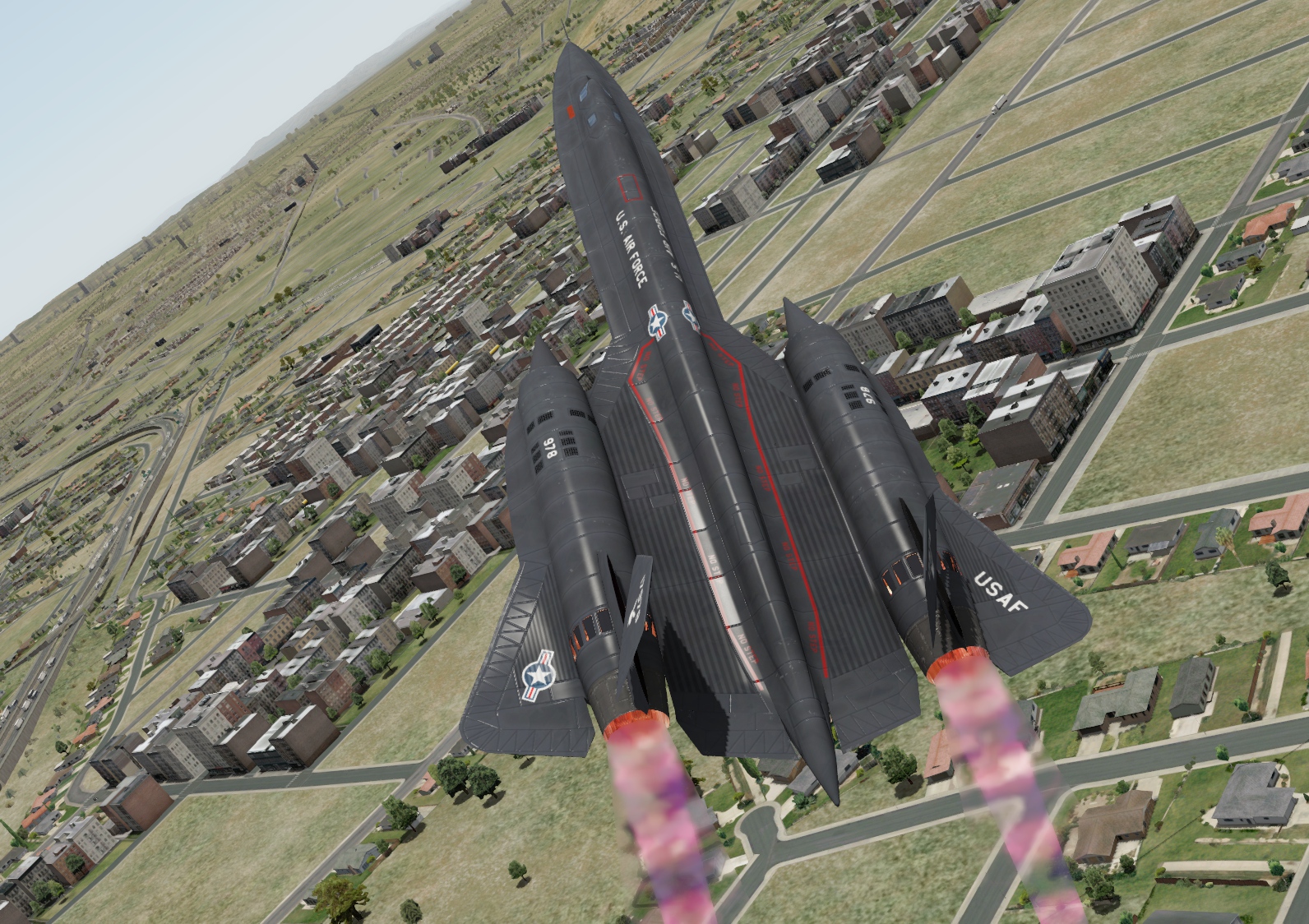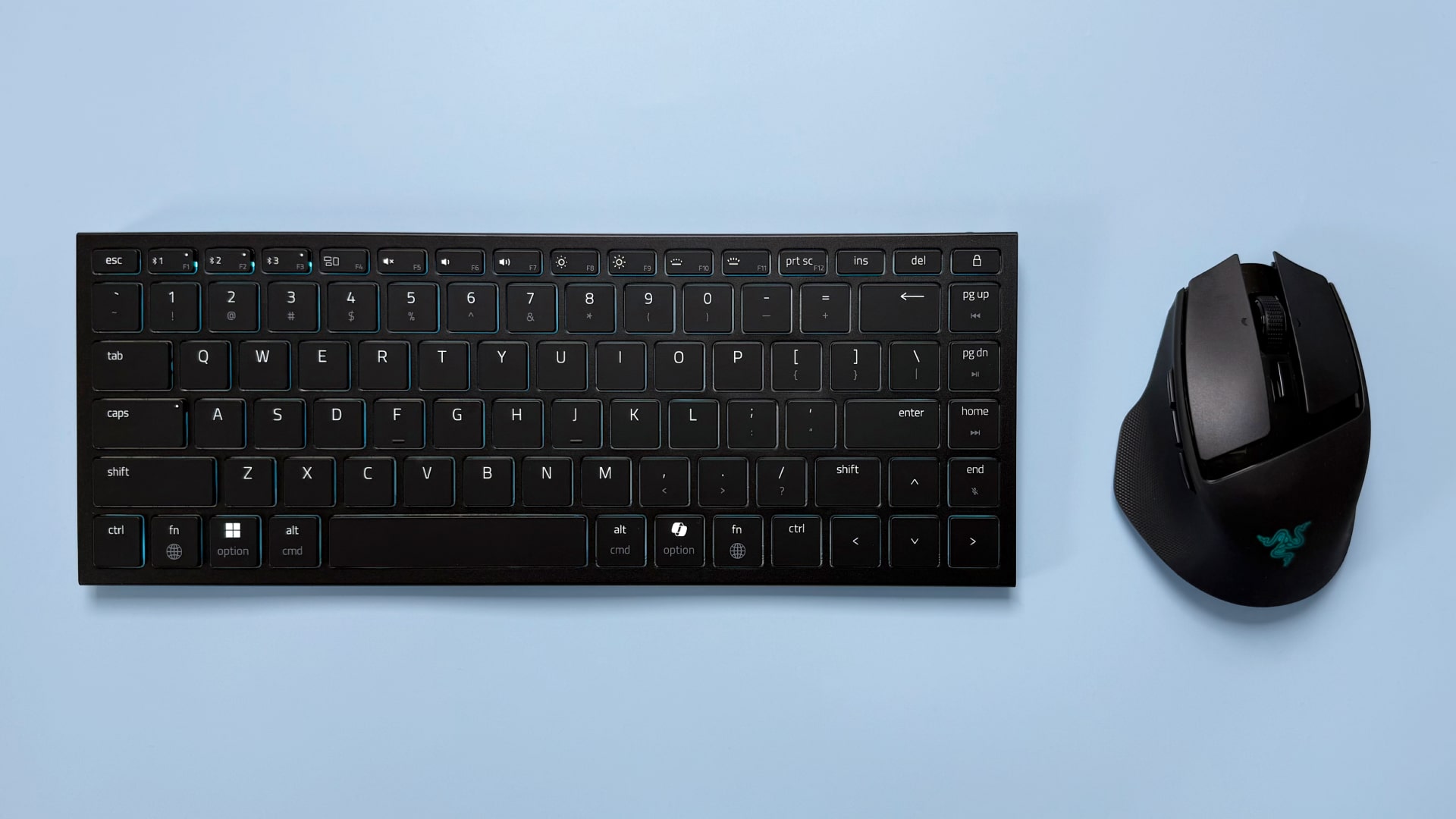Our Verdict
Plenty of progress especially in areas like graphics and aTc, but dont toss aside Microsofts FSX quite yet.
PC Gamer's got your back
The eight DVDs' worth of scenery files have been installed, the joystick has been configured, and the cat has been fed. The moment has come.
Excitedly, I type the name of my local aerodrome into X-Plane 10's search box and press 'GO TO THIS AIRPORT'. A minute or two passes, then one of the dullest splash screens I've ever seen dissolves to reveal...
Hmm.
Lifting the camera high above the high wing of a handsome US Army Stinson L-5, I see hills draped with field textures stretching to a distant horizon. What I don't see is a single 3D tree or building. I check the scenery settings. As I thought: 'airport detail' is notched at 'totally insane', 'number of objects' at 'tons'. In vanilla FSX this bucolic Hampshire strip looked like it was situated in a wooded corner of Tuscany. X-Plane makes it look like it's in the middle of a deserted Hebridean isle. I think I prefer the Tuscany version.
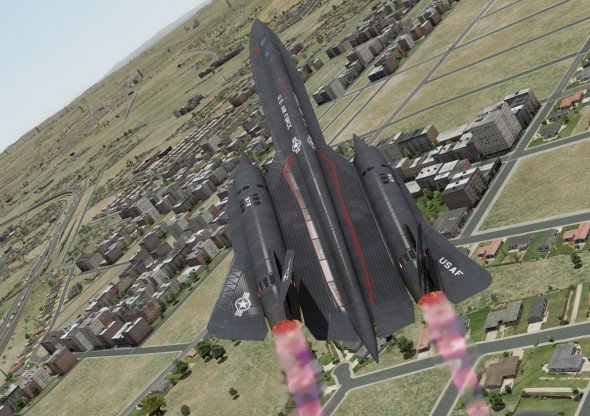
Then again, in FSX I don't remember the hill fort on the southern edge of the airfield looking quite so hilly, or the downland ridge to the east looking nearly so pronounced. Perhaps those hours of scenery installation were worth it after all. Let's see what the land looks like from the air.
As the Stinson bumps along the undulating turf and hauls itself into a breezy summer sky, I spot something I've never seen in any iteration of Flight Simulator – the little B-road that runs along the northern perimeter of the field. I begin to follow the tarmac squiggle. An hour later I land back where I started with a quite different opinion of the sim's scenic strength.
While Laminar Research's new autogen scenery system leaves large tracts of the globe balder than a baboon's bum, makes central London look like suburban Los Angeles, and occasionally puts bridges and electricity pylons where bridges and electricity pylons have no business to be, its utilisation of detailed highway data and fine elevation mesh means low-level 'VFR' navigation is actually a far more practical prospect than it is in an unaugmented install of FSX. You won't see your house in X-Plane 10 – you might not even see your village or suburb – but there's a very good chance you will see your road, avenue, close, or lane.
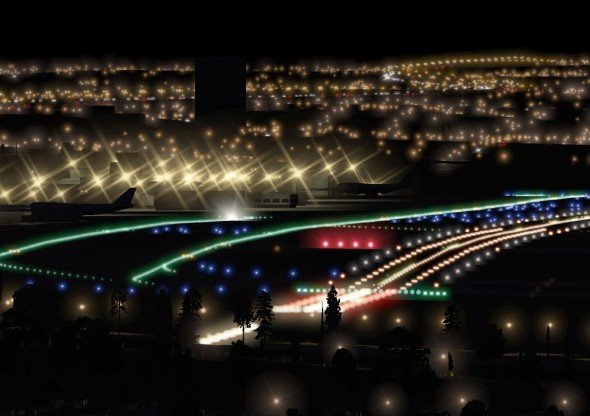
That Austin Meyer and chums haven't found the time to add hangars and towers to every tin-pot airfield isn't a great surprise. What is a little disappointing is that the sim's representation of major airports and capitals is still far below the FSX benchmark. Weary passengers stepping out of their Jumbos at JFK, Heathrow, or Charles de Gaulle will find tracts of bare concrete where terminals should be. I know I can pop along to x-plane.org and download decent user-made solutions, but the new autogen code really should have been savvy enough to slap down some generic structures as a stopgap.
Oh well, at least the invisible control towers have invisible air traffic controllers inside them at long last. After the scenery and graphics progress, this edition's most substantive improvements are its AI traffic and interactive ATC. In the past, X-Planing offline was a dashed lonely business. The closest you came to interaction was accidentally mincing a migrating goose with your prop or turbofan. In X-Plane 10 you can wave at passing planes (though there are never more than a handful of these aloft at any one time) and exchange pleasantries with several different types of tin pusher.
I say 'exchange pleasantries'... The text-based ATC menu only lets you file IFR flight-plans and request clearances. It's a more realistic treatment than Microsoft's (you must manually tune radios at each stage of a journey which means consulting maps and fiddling with small dials). It's also a little less reliable. Controllers will occasionally lapse into sulky silences or infuriating repetition. At times you'll be told to taxi in circles or trundle through waiting aircraft.
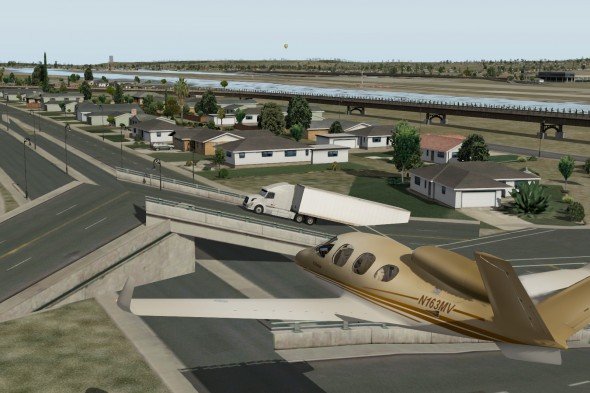
Considering Laminar don't have an impatient publisher breathing down their neck, the number of gremlins in this release is startling. Every day in addition to those ATC meltdowns, I've endured three or four crashes. CTD causes range from bad saves and corrupt plane files, to systems failures (X-Plane features wonderfully sophisticated aircraft malfunction modelling. Almost every element of a plane is vulnerable to random failures). In normal circumstances, I'd be dismayed. Knowing the way that Austin and his crew work, I'm merely disappointed.
Buying an edition of X-Plane isn't like buying the latest iteration of Microsoft Flight Simulator. You're effectively purchasing the sim plus the next few years' worth of updates and improvements. By the time version 11 flops onto the runway, many of the issues highlighted in this review will have vanished like windcombed vapour trails.
The question is: will you have vanished too? Does X-Plane 10 have enough going for it to warrant a few months of stiff-upper-lip stoicism? If you're a Microsoft Flight Sim user still bitter about FSX's feeble framerates, I reckon the answer is a clear 'aye'. Though the swiftness that characterised the indie pretender in its early days has been sacrificed on the altar of autogen and fancy rendering, it still outperforms its plodding peer in most circumstances. How much of this edge is down to cannier coding, and how much is down to emptier vistas, it's hard to say.
For PC pilots searching for sim steeds that look and handle exactly like their real-world equivalents, the decision is more difficult. X-Plane uses 'blade element' theory to determine its flight models. Put crudely, the way an aircraft behaves is determined by the shape of its 3D model and the output of its engine, rather than a table of scrupulously researched data. While this unusual approach together with the sim's bundled aeroplane editor (not for the faint of heart) is a boon for aspiring aircraft designers, its benefits to the realism-hungry simmer are questionable. Because CPUs still struggle to model the air flows swirling round fuselages and aerofoils, and modellers don't always replicate every dimple and protuberance on those fuselages and aerofoils, X-Plane's Cessna 172 and Beechcraft Baron don't necessarily fly more plausibly than FSX's Cessna 172 and Beechcraft Baron.
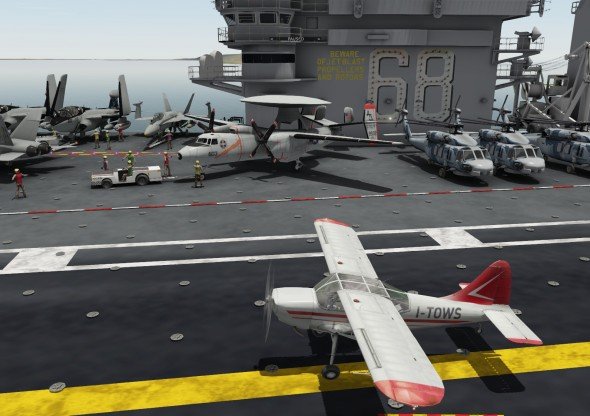
As in Microsoft Aces' swansong, many of your finest flying experiences are likely to come via payware and freeware add-ons. Though the large default hangar houses some very fine machines (the new Jumbo and Stinson are especially lovely) a lot of its exotic inmates are inherited from older versions, and have, frankly, seen better days. Strong candidates for the cutter's torch include virtual cockpit-less old-timers like the Sea Harrier and 777.
Other groups that may not cleave to X-Plane include sim novices and those who like their aviation structured and spiced with adventure. There are no formal tutorials in X-Plane and the closest thing to scenarios are 'situations'. With a couple of clicks you can set up a carrier or oil rig approach, fight a forest fire, or attempt mid-air refuelling. Once you've tired of these sideshows, the assumption is that you'll spend most of your time making your own fun by gallivanting around the globe on self-generated sorties.
It's a reasonable assumption. With an entire Earth to roam – an Earth enveloped by Laminar's impressively fluid/fearsome weather fronts – and an Aladdin's aerodrome of usermade content waiting to be downloaded, X-Plane 10 is more of a hobby than a game.
Is it better sim than FSX? Possibly not, but choosing between these two winged wonders is becoming increasingly tricky.
Plenty of progress especially in areas like graphics and aTc, but dont toss aside Microsofts FSX quite yet.
